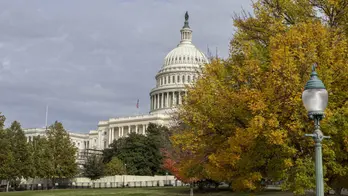It's hot out there. A new analysis shows it's much worse if you're in a city
Tens of millions of Americans have been living with stifling, dangerous heat this summer. A new analysis shows how much worse it is for people living in urban environments.
Roughly 41 million people live in urban areas where temperatures are at least 8 degrees Fahrenheit warmer than their more rural surroundings, according to the analysis from the nonprofit research group Climate Central. In some neighborhoods of Washington D.C., Chicago, New York and San Francisco, temperatures are more than 10 degrees hotter, amplifying health risks and cooling costs for millions of residents.
Other research shows low-income areas and communities of color are often-worst affected.
Climate change, supercharged by the burning of fossil fuels, is causing more intense and more frequent heatwaves. A study published earlier this week found that recent heatwaves in Europe and America would be "virtually impossible" without human-caused warming.
In cities, the heat is amplified by something called the urban heat island effect.
Urban heat islands are a byproduct of a built environment. Gas-powered cars and air conditioning units generate and radiate heat. Concrete parking lots and buildings absorb the sun's heat and emit that heat long after the sun sets. Fewer trees mean less shade. Densely built areas essentially become islands where temperatures are hotter than their surroundings.
"Even if you live in the suburbs, there is some relevance when you think maybe [from] your nice shaded house, you go to the shopping plaza by the highway and you feel how much hotter it is there," said Jen Brady, senior data analyst at Climate Central. "It's because you have this dense built environment."
The new analysis is essentially a more detailed and tighter focused version of a report Brady helped lead in 2021, which created an index to measure the intensity of urban heat islands and then ranked the nation's 159 most-affected cities. That index generated an intensity score based on several things including population density, building height, and whether a surface reflects sunlight or absorbs and retains heat. Climate Central's latest examination looked at 44 of the country's largest cities by population, zoomed in, and applied the same index to nearly 19,000 census tracts.
"I was surprised at how far out the urban heat island effect was," Brady said. "I was thinking once you got out of the city core, [temperature] was just going to jump off a cliff, you know, [from] eight degrees more to two."
In reality, she said, the effects extend fairly far out. "You're maintaining four to five degrees further and further outside even the city core."
The study did not apply socioeconomic or race data to the findings, but other research shows that some neighborhoods experience even worse heat island effects than others.
Angel Hsu, a public policy professor at the University of North Carolina, published a study in 2021 looking at disproportionate exposures to heat islands between different communities.
"What we found is that within a city, there can be huge differences in those temperatures and the heat exposure that various residents experience depending on their socio-demographic background," she said. "Americans in major U.S. cities living two times below the poverty line are exposed to almost a full degree higher Celsius of this urban heat island effect compared to their wealthier counterparts. And the same thing goes with people of color."
The Biden administration is trying to address the discrepancy, announcing earlier this year the availability of $1 billion in grants for projects aimed at expanding green space or tree coverage in disadvantaged urban communities. Some cities and states are leading efforts to do the same. In Austin, aluminum shelters are being built over bus stops, providing shade for waiting commuters. In Los Angeles, some streets are being painted a bright shade of gray to reflect sunlight.
"There are smaller scale solutions," Brady said. "It's not going to take you from ten additional degrees to zero degrees, but they can make it more bearable."
Disclaimer: The copyright of this article belongs to the original author. Reposting this article is solely for the purpose of information dissemination and does not constitute any investment advice. If there is any infringement, please contact us immediately. We will make corrections or deletions as necessary. Thank you.







